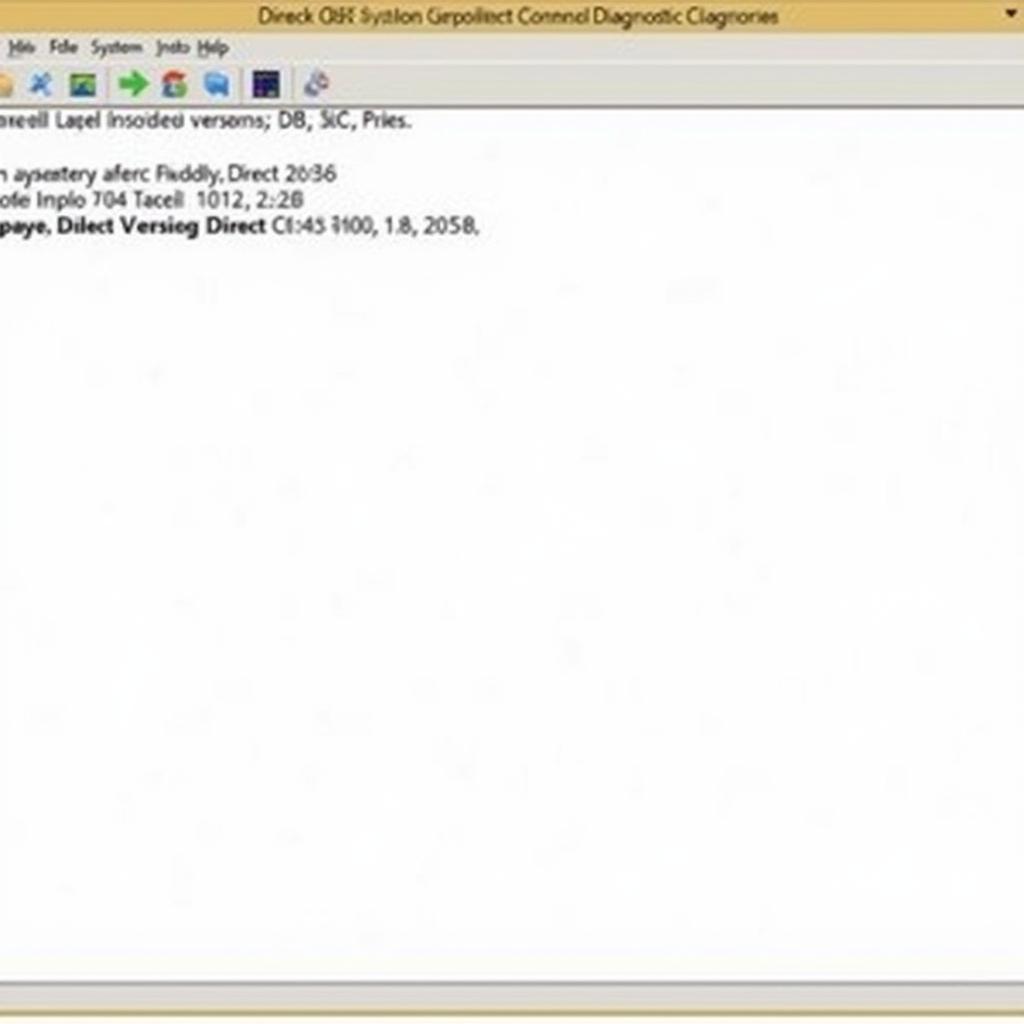A slow or unreliable internet connection can be incredibly frustrating. If you’re experiencing problems with your DSL connection, a Dsl Modem Diagnostic Tool can be your best friend. These tools help you pinpoint the source of the issue and often guide you towards a solution.
Understanding DSL Modem Diagnostic Tools
Before we delve into the specifics, let’s clarify what a DSL modem diagnostic tool actually does. Simply put, it examines your DSL connection, looking for any irregularities or problems that might be affecting your internet service. Think of it as a digital mechanic for your internet.
Common Issues DSL Modem Diagnostic Tools Can Help Identify
These tools are powerful allies in diagnosing a variety of common DSL issues, such as:
- Slow internet speed: The tool can check your line’s actual speed against your subscribed speed, identifying potential bottlenecks.
- Intermittent connectivity: Frequent disconnections can be frustrating. Diagnostic tools can reveal stability issues with your line.
- No internet connection whatsoever: Complete outages can be diagnosed by checking the DSL line’s synchronization status.
- Line noise and interference: The tool can detect noise levels that might be degrading your connection quality.
How to Use a DSL Modem Diagnostic Tool
Accessing and utilizing these tools is usually straightforward:
- Connect to your modem: Open a web browser and enter your modem’s IP address (usually found on the back of the device or in the user manual).
- Log in to the modem’s interface: Enter the required username and password.
- Navigate to the diagnostic section: Look for tabs or sections labeled “Diagnostics,” “System Log,” or similar.
- Run the diagnostic tests: Most modems offer built-in tests for line quality, speed, and error rates.
Interpreting the Results
Understanding the diagnostic results is key to fixing the problem:
- Line Status: This indicates whether your modem is successfully connected to your internet service provider (ISP).
- Signal-to-Noise Ratio (SNR): A higher SNR indicates a cleaner, more stable connection.
- Attenuation: This measures signal loss over distance. High attenuation can result in slow speeds.
- Error Counts: A high number of errors (CRC, HEC) suggests line interference or other issues.
When to Contact Your ISP
While DSL modem diagnostic tools can help identify problems, some issues require assistance from your ISP:
- Physical line problems: Issues with external wiring or damage to the infrastructure.
- Authentication problems: Difficulties with your username, password, or account status.
- Suspected outages in your area: Widespread service disruptions.
“Don’t hesitate to contact your ISP if the diagnostic results are unclear or if you suspect a problem outside your home network,” advises John Miller, Senior Network Technician at ScanToolUS. “They have the tools and expertise to diagnose and resolve complex line issues.”
Choosing the Right DSL Modem Diagnostic Tool
There are various tools available, ranging from built-in modem features to third-party software. Some popular options include:
- Your modem’s built-in diagnostics: Most DSL modems come equipped with basic diagnostic tools.
- Online speed tests: Websites like Ookla’s Speedtest.net can measure your download and upload speeds.
- Third-party DSL diagnostic software: These tools offer more advanced features and detailed analysis.
Tips for Optimal DSL Performance
- Ensure proper modem placement: Position your modem away from electronic devices that can cause interference.
- Use high-quality phone wiring: Old or damaged wiring can degrade your connection quality.
- Consider a DSL filter: These filters help prevent interference from other devices sharing your phone line.
Conclusion
DSL modem diagnostic tools are essential for troubleshooting internet connection problems. By understanding how to use and interpret the results, you can often identify and fix common issues yourself, saving you time and potential frustration. If the problem persists, don’t hesitate to contact your ISP or a qualified technician for further assistance. For professional-grade diagnostic tools and expert support, contact ScanToolUS at +1 (641) 206-8880 or visit our office located at 1615 S Laramie Ave, Cicero, IL 60804, USA.
FAQs
1. Can I use a DSL modem diagnostic tool with any DSL connection?
While most tools are universally compatible, it’s best to use tools specifically recommended by your ISP or modem manufacturer for optimal results.
2. Is it safe to use a DSL modem diagnostic tool?
Yes, these tools are generally safe to use. They don’t make any changes to your modem’s settings unless you specifically instruct them to do so.
3. What is a good SNR value for DSL?
A good SNR value is typically considered to be 6dB or higher. However, ideal values can vary depending on your DSL technology and line conditions.
4. Can I use a DSL modem diagnostic tool to improve my Wi-Fi signal?
While DSL modem diagnostic tools focus on the DSL connection itself, they don’t directly address Wi-Fi issues.
5. How often should I run DSL modem diagnostic tests?
It’s a good practice to run diagnostic tests whenever you experience internet connectivity problems. Regular checks can also help identify potential issues early on.

